Dog Hind Leg Weakness: How to Help Naturally at Home
![]()
Dog Hind Leg Weakness: Is It Sarcopenia? What You Can Do At Home
If you have an aging dog with weak hind legs, trouble getting up, or slipping on smooth floors, there is a good chance they have sarcopenia. My own dog Tula has it.
Sarcopenia is age related muscle loss, and it can seriously affect your dog’s mobility and quality of life. In this article, I will walk you through what sarcopenia is, what is happening inside your dog’s body, and the main things you can start doing at home right now to help.
And yes, this includes specific exercises, diet changes, and supplements I am using with Tula.
If you are looking to learn more about natural pet health and wellness, you are in the right place. Click to subscribe to Veterinary Secrets so you do not miss future videos and articles.


What Is Sarcopenia In Dogs?
Sarcopenia is the age related loss of muscle mass and strength.
It is very common in older people and in older dogs. In many dogs, it can begin as early as seven years of age.
It is not simply that older dogs “slow down.” When muscle loss sets in, there is:
-
Reduced strength
-
Poor balance
-
Higher chance of injury
-
More strain on joints and ligaments
With Tula, she cannot put all her weight on her rear legs. She shifts more force onto her front end. That means going up and down stairs, jumping, or even just walking on slippery floors becomes risky. She is much more likely to slip, fall, and hurt herself.
Why Muscle Loss Is A Big Deal For Your Dog’s Health
Sarcopenia is not just about weak legs. There are metabolic consequences too.

A big part of your dog’s immune system depends on:
-
Adequate protein intake
-
Proper enzyme systems running throughout the body
-
Normal biochemical pathways built from amino acids
If your dog does not have enough protein and muscle mass, the body cannot build and repair properly. This can make your dog far more likely to:
-
Get ill
-
Struggle to recover from disease
-
Develop serious conditions, including cancer
For all these reasons, recognizing sarcopenia in your dog is extremely important. Your veterinarian should know about it, and you should feel empowered to do something at home.
What Is Happening Inside The Muscles?
At a cellular level, with sarcopenia:
-
The number and size of muscle fibers shrink
-
Muscle tissue is gradually infiltrated and replaced by fat
-
The muscles have far less strength and endurance
This most often affects the rear legs. The muscles that tend to lose mass include:
-
The quadriceps (front of the thigh)
-
The gluteal muscles (muscles over the “bum”)
-
The hamstrings (rear of the thigh)
When I palpate Tula’s rear legs now, I can feel the difference. Her quads used to be much larger. Because she is putting less weight on her rear, those muscles have started to atrophy.
Early Signs Of Sarcopenia: What I Noticed With Tula
One of the first things I noticed with Tula, and you may see the same with your dog, is a change in how she handles different surfaces.
On a firm, carpeted surface, she manages fairly well. But when I remove the carpet and she is on a smooth floor, you can see:
-
Her rear legs start to slide outward
-
She struggles to keep a normal standing position
-
Her feet slip forward and she has to sit down
She simply does not have the muscle strength to hold herself up on a slick surface.
That is why muscle strength is so important for basic mobility and stability.
And yes, I am aging too, so these changes are top of mind. Tula and I are kind of on the same plan.
Step One: Fix The Diet To Support Muscle
If your dog has hind leg weakness or sarcopenia, the first thing to look at is diet.

Focus On High Quality Animal Protein
Your dog needs high quality, bioavailable animal protein.
If your dog is still on kibble, like Tula is for about half of her diet, make sure it is:
-
A good quality kibble
-
With a high percentage of animal ingredients
-
Animal protein as the first ingredient
For example, the kibble I use for Tula lists 65% animal ingredients, with chicken as the first ingredient.
However, kibble is still a processed food. It is not ideal on its own. So we do more.
Adding Gently Cooked Real Food
The other half of Tula’s diet is a gently cooked prepackaged meal with simple, real ingredients.
-
The number one ingredient is chicken
-
It is full of bioavailable protein
-
Much of what she eats from this is easily absorbed and used to support her muscle mass
Protein-Rich Toppers
As a topper and sometimes as a treat, I also give Tula:
-
Freeze-dried animal protein
This provides:
-
Extra amino acids
-
Additional nutrients
-
More “building blocks” for muscle
The idea is simple: better protein in, better muscle support out.
Step Two: Supplements For Dogs With Sarcopenia
Next is the use of supplements. These help with secondary problems such as arthritis and pain, which otherwise keep your dog from moving.

Dr. Jones’ Ultimate Canine Advanced Plus
Tula is on Dr. Jones’ Ultimate Canine Advanced Plus. It includes:
-
Glucosamine, chondroitin, MSM for joint support
-
Essential fatty acids for joint lubrication and pain relief
-
95% curcumin for natural anti-inflammatory and pain support
-
Additional taurine, an amino acid that can also help support muscle
This combination supports her joints, muscles, and overall comfort.

Hemp-Infused Joint Care Chews
If Tula overdoes it, or we go on a longer run, or she tries to go full speed after a squirrel, she can come back a little sore.
In these cases, I give her:
-
Hemp infused Joint Care chews
These contain:
-
Extra glucosamine and chondroitin
-
The anti-inflammatory benefits of hemp
-
Turmeric for additional pain relief
CBD For Pain And Anxiety
The third pain support I use is Dr. Jones’s Ultimate CBD for Dogs and Cats.
Tula gets CBD:
-
When she is uncomfortable after exercise
-
When she slips on stairs
-
Also for anxiety
Her dose is 3 mg per 10 lbs of body weight. She is a little over 20 lbs, so she usually gets 2 to 3 drops, and if she is really sore, I will give 5 drops.

She responds very well, often within about 30 minutes.
With CBD and the other supplements, I have been able to avoid conventional NSAIDs for the most part, and she is still comfortable.
Omega-3 Essential Fatty Acids
The fourth key supplement is Dr. Jones’s Ultimate Omega-3 Formula.
Omega-3s:
-
Decrease inflammation
-
Help many dogs with arthritis
-
Support joint health and skin health
Tula gets 1,000 mg daily.
These supplements will not reverse sarcopenia completely. Age related muscle loss is real.
However, they reduce pain, increase comfort, and make it much more likely that your dog will get up and move, which is the most important piece for maintaining muscle.
Step Three: Exercise For Rear Leg Strength
Movement is critical.
First and foremost, you want your dog to keep moving every day.
-
Light walking is fine
-
Aim for at least three sessions a day
-
Support your dog in whatever way you can to encourage regular movement
Tula is no longer sprinting down mountain bike trails, but she is still active. I focus on walking with her uphill.
When you walk uphill, your dog must:
-
Put more force through the rear limbs
-
Engage the quadriceps and hamstrings
-
Work harder to push the body up the hill
We go slow. I am not trying to push her too hard. The goal is to use those rear legs so the muscles do not just fade away. Applying controlled force to muscle is what helps maintain and build it.
Gentle Home Physio And Massage
Many dogs with sarcopenia are stiff and tight, especially in the rear legs. That makes it harder to start moving. I can relate.
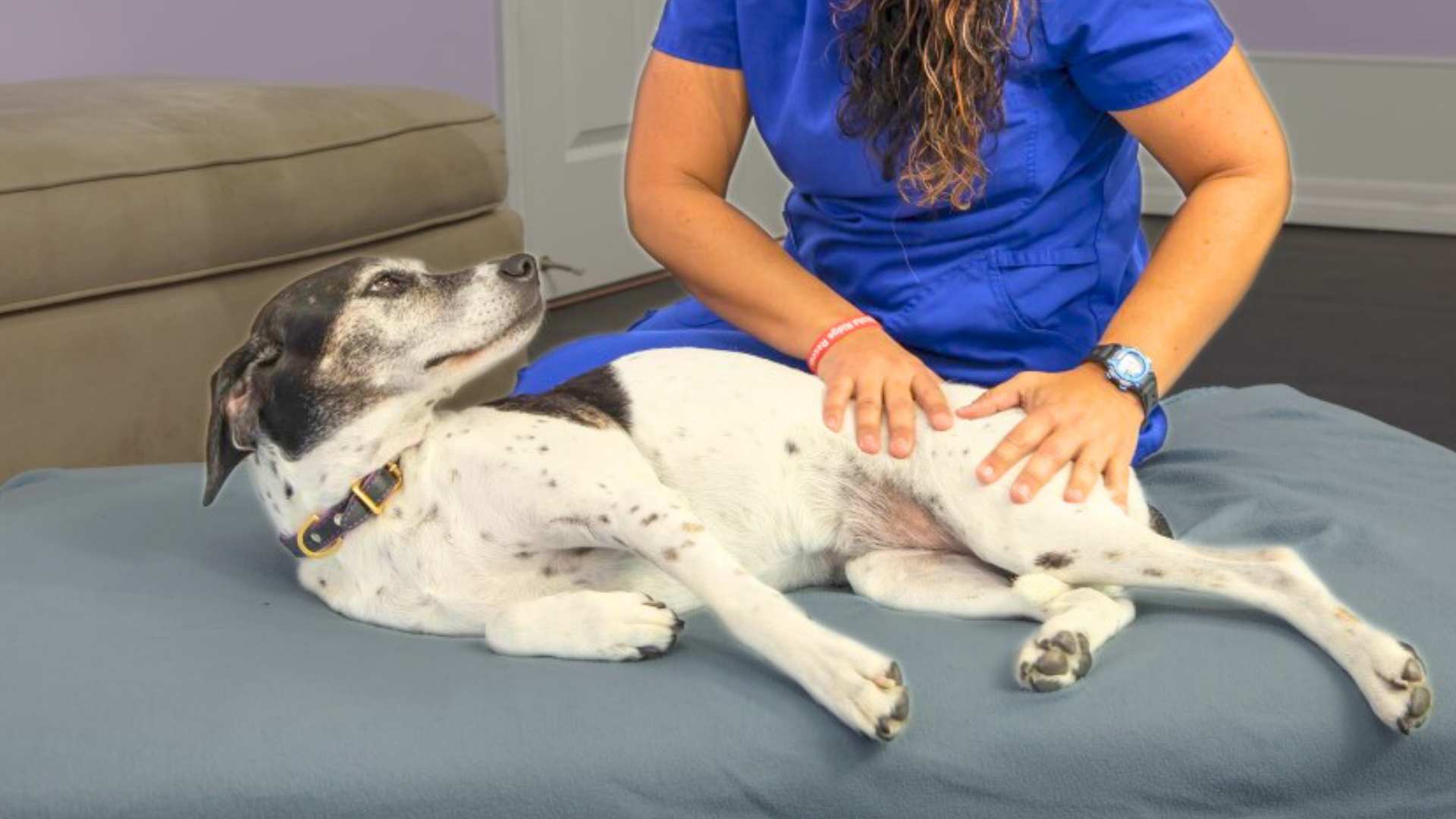
Two simple things help a lot:
Passive Range Of Motion
You can gently move your dog’s joints through their natural range:
-
Hold the knee
-
Lightly extend the hip
-
Then flex
-
Then extend again
Do this slowly and gently.
A few minutes, once a day, on both the right and left rear leg can make a real difference.
Simple Massage
Massage helps loosen tight muscles and improve circulation.
Focus on:
-
The gluteal muscles around the hips and base of the tail
-
The quadriceps along the front of the thigh
-
The hamstrings along the back of the thigh
Most dogs really enjoy it. Tula will happily stand for a hamstring massage.
This warmup is ideal before you move into more specific sarcopenia exercises.
Simple Sarcopenia Exercises You Can Do At Home
These exercises come from canine rehabilitation experts. I am not a rehab specialist, but I can show you the basics so you get a sense of what to do.

1. Sit To Stand
This is like a dog version of a squat. It is one of the best exercises for:
-
Glutes
-
Hamstrings
-
Quadriceps
How to do it:
-
Ask your dog to sit.
-
Then ask them to stand.
-
Repeat several times.
You can make it more challenging by placing your dog’s front legs on a step or low book, so more weight goes into the rear legs as they sit and stand.
2. Pivot
For the pivot exercise:
-
Place your dog’s front legs on a stable platform with a non-slip surface, such as a book with a grippy mat.
-
Encourage your dog to pivot around with the rear legs while the front legs stay in place.
Some dogs pick this up quickly. Others, like Tula, have their own interpretation. Even if it is not perfect, the goal is extra controlled movement in the rear legs.
3. Side Stepping
Side stepping works the muscles in a different plane of movement.
-
Stand beside your dog.
-
Use your leg or hand and a treat to gently encourage them to step sideways.
You can also place a simple pole (like a broom handle) on the ground that your dog needs to step over while you nudge them sideways.
4. Walking Backwards
Walking backward forces your dog to put extra load through the rear legs.
-
Stand in front of your dog with a treat.
-
Gently walk toward them so they back up to follow the treat.
-
Reward any backward steps.
Some dogs can do full controlled reverse walking once they get the hang of it. Tula does her own shorter version, and that is fine. The key is controlled rear leg engagement.
Bringing It All Together
Sarcopenia, or age related muscle loss in dogs, is common, but it is not something you just have to accept without action.
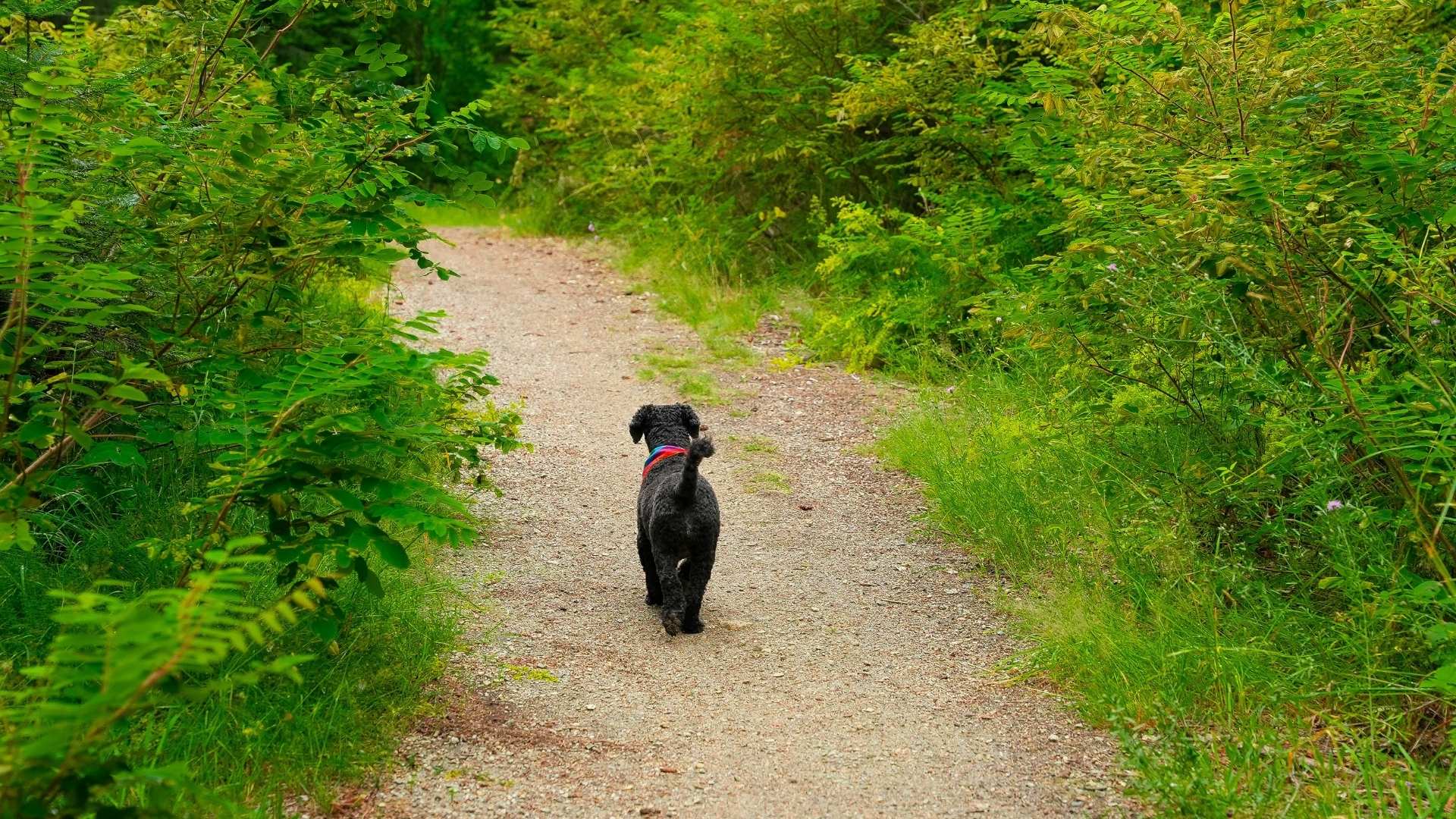
With Tula, I focus on:
-
High quality animal protein and better food
-
Joint and anti-inflammatory supplements
-
Omega-3s and CBD for comfort and pain relief
-
Regular movement, especially uphill walking
-
Home physio, massage, and simple strengthening exercises
You can do many of these things at home with your own aging dog. Small changes, done consistently, can make a big difference in mobility, comfort, and quality of life.



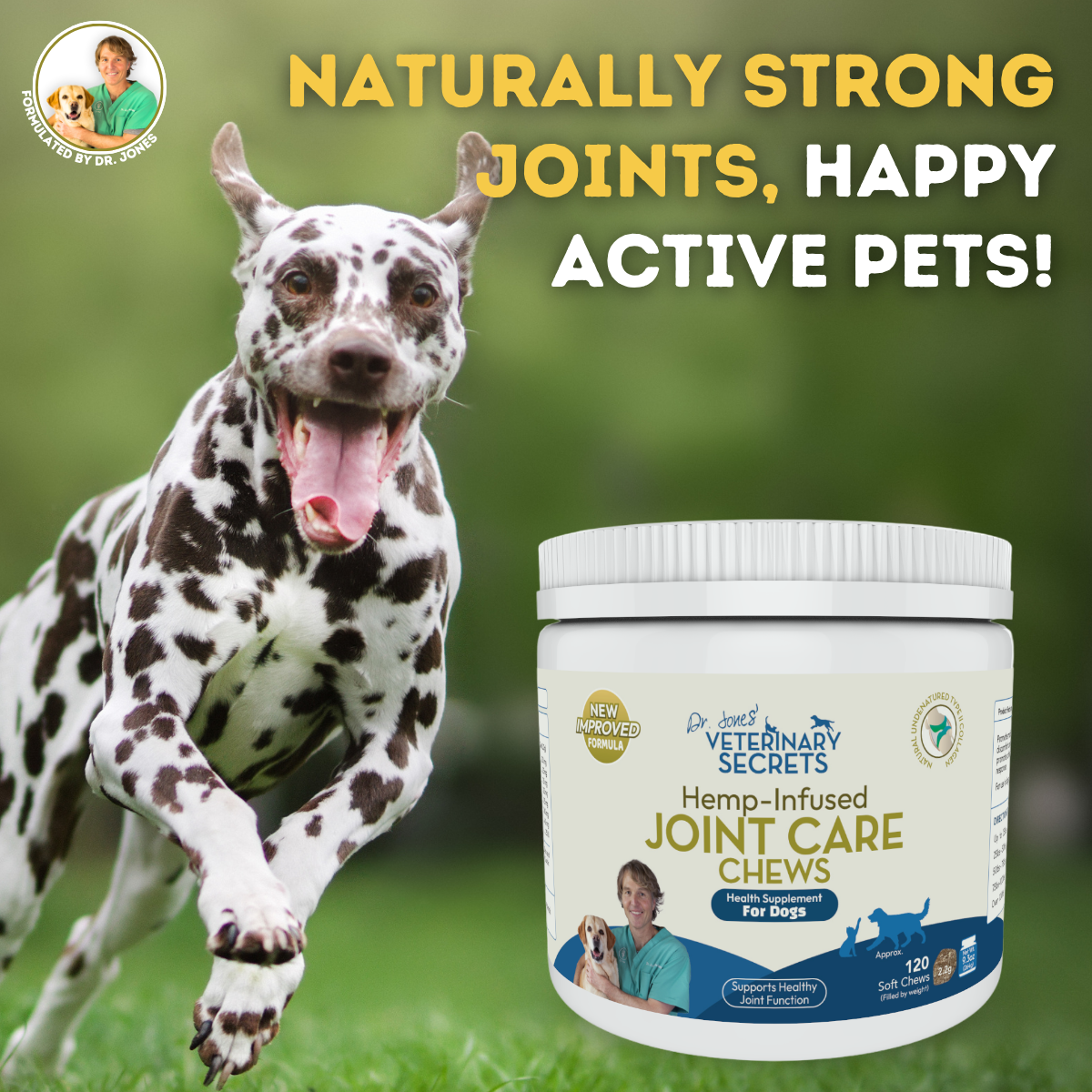


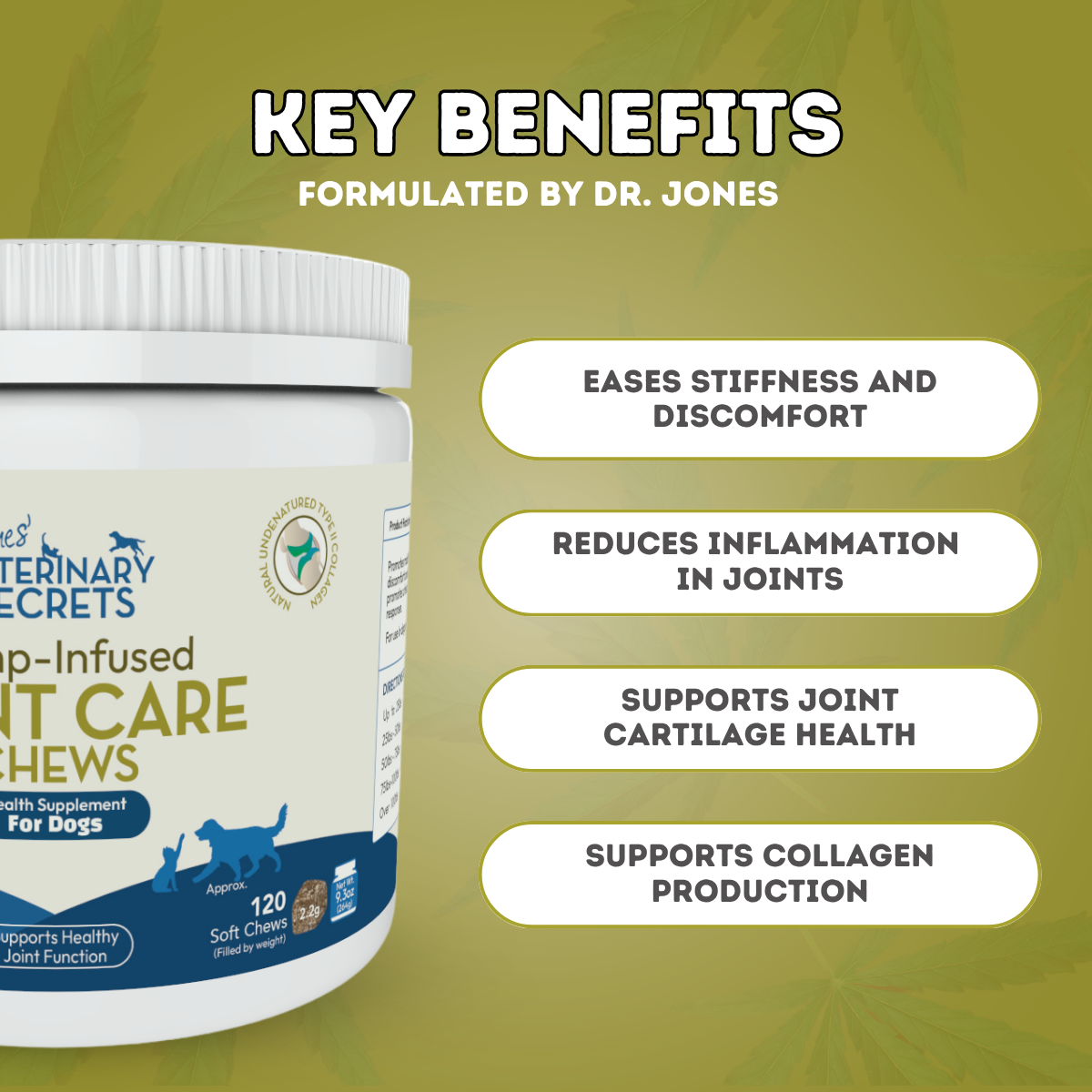

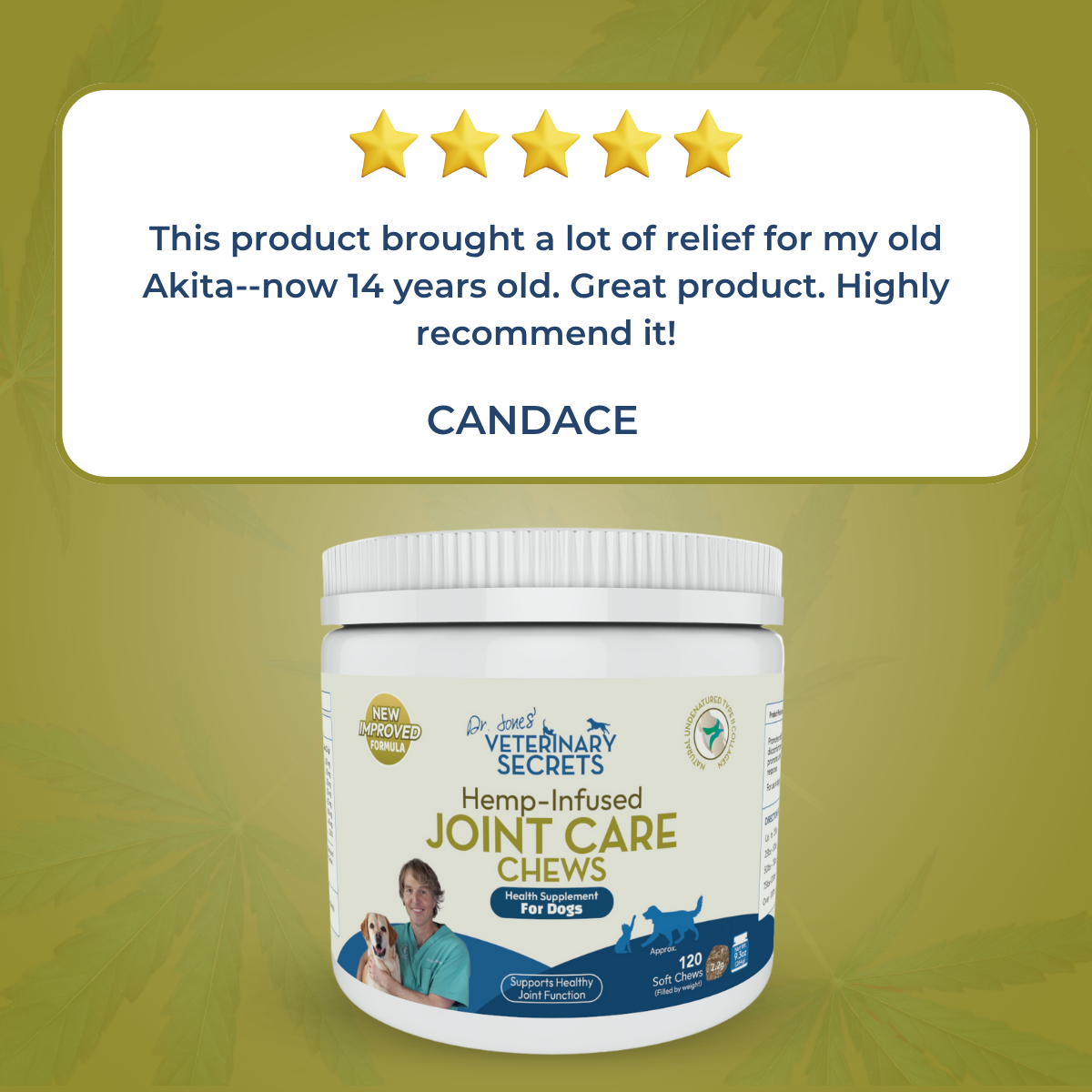



I used a flea and tick topical from Sargent on the back of my 70 lb pit bull. The next day she couldn’t walk or stand very long. I called the number on the box. That Vet was a complete waste of time. I made an appointment with the local Vet a four day wait and a credit card PREPAYMENT OF $100.00. Well, that got me a prescription of steroids for another &60 or $ 80 bucks. What a BURN!
My dog is getting better but, she isn’t 100% pre poison state.
Still struggling with fleas and ticks. I’m using a clove and peppermint spray on bedding and in the mud room where she sleeps. I’ve lightly sprayed her as well. In conjunction with diatomaceous earth in room, bedding and on her. Outside I have used it in her large kennel enclosure.
I have cats and they have them as well. I have been vacuuming every other day as throughly as possible. Tried coconut oil with a very small dose of frankincense. That didn’t go over well. Getting geared up to try ACV DILUTED with water 1:3 pts water.
I am exhausted
I nearly broke down and bought capstar and frontline, and called an exterminator out, which I don’t want to do.
Any input of expertise would be appreciated, truely!
Thank you!
Oh wow, that is a lot, and I’m really sorry you and your dog went through that. Reactions like that to some topicals unfortunately do happen, and I know how exhausting flea battles can be, especially with multiple pets.
Dr. Jones has several blog articles that walk through safer flea and tick options, what to do after a topical reaction, and how to tackle infestations without going nuclear. They’re meant to give you a clear plan without adding more stress.
DIY Natural Flea Spray: Effective & Easy Recipe for Spring! — a safe homemade spray recipe you can use on bedding and pets (lightly). https://veterinarysecrets.com/its-spring-and-fleas-are-coming-new-natural-flea-spray-recipe/
Non-Toxic Flea and Tick Guards, plus Dr. Jones’ New Homemade Flea Spray! — another natural strategy article with step-by-step tips and repellents. https://veterinarysecrets.com/non-toxic-flea-and-tick-guards-plus-dr-jones-new-homemade-flea-spray/
Safe Flea Treatments for Dogs & Cats: Natural Remedies That Work — a recent overview of natural flea controls like diatomaceous earth, herbal repellents, and a safe spray recipe. https://veterinarysecrets.com/safe-flea-treatments-for-dogs-cats-natural-remedies-that-work/
You’re doing the best you can, and your dog is lucky to have you fighting so hard for her. Take a breath, then check out those resources when you can.